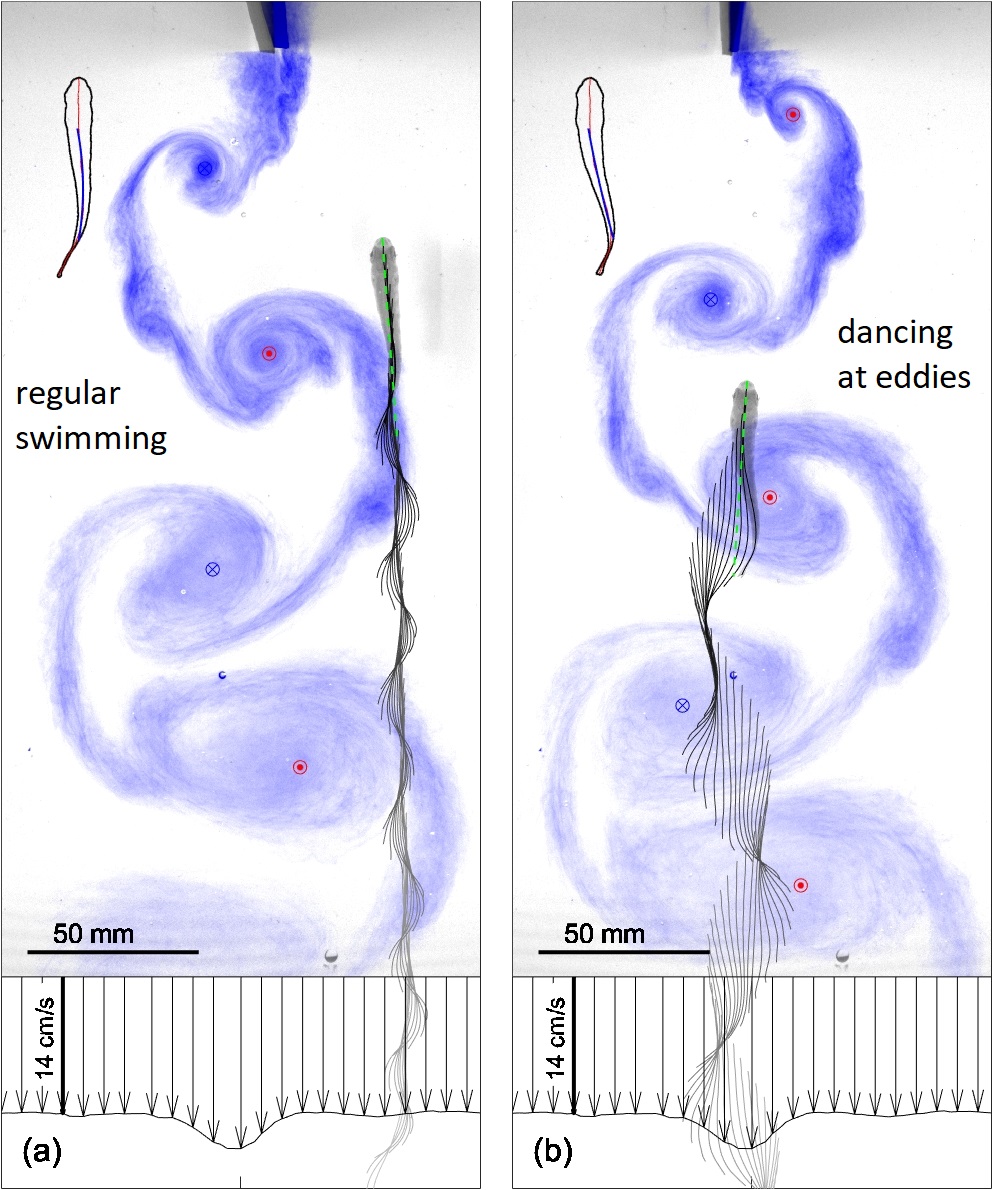Albatrosses of rivers - new research paper published
A new research paper, published in Scientific Reports, demonstrates complex fish swimming dynamics which so far have only been partly understood. Dr Petr Denissenko, a member of the Fluid Dynamics Group, was co-author on this fascinating new work: "An inertial mechanism behind dynamic station holding by fish swinging in a vortex street".
Animals are inherently lazy, trying to conserve energy whenever possible. Most of us have seen that in rivers, fishes stay in wakes behind stones, but few know that they can choose a faster part of a stream if there are vortices to “push” off from. Scientists from Warwick and Cardiff Universities studied trout in a stream behind a flapping hydrofoil that produced a string of vortices, creating higher flow in the middle of the stream. Surprisingly, some fish preferred staying in this fast area, dancing between vortices. Researchers theorised that a fish uses its inertia to convert cross-stream flow between vortices to forward propulsion. A similar trick called dynamic soaring is used by the albatross, effortlessly covering thousands of miles. Now, its underwater colleague is found.
You can view a video demonstrating the fish eddy-dance here: https://youtu.be/8B8KZffUYZk (external site).
The article is available to read as Open Access here: https://www.nature.com/articles/s41598-022-16181-8

